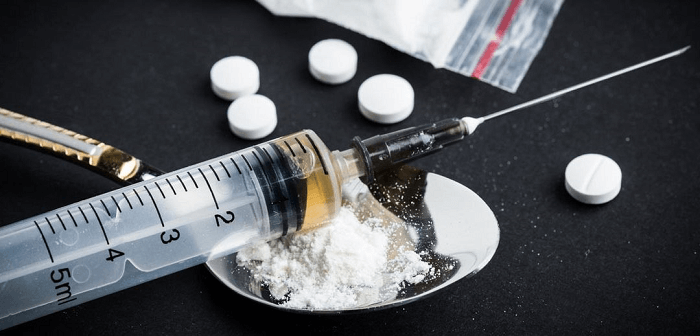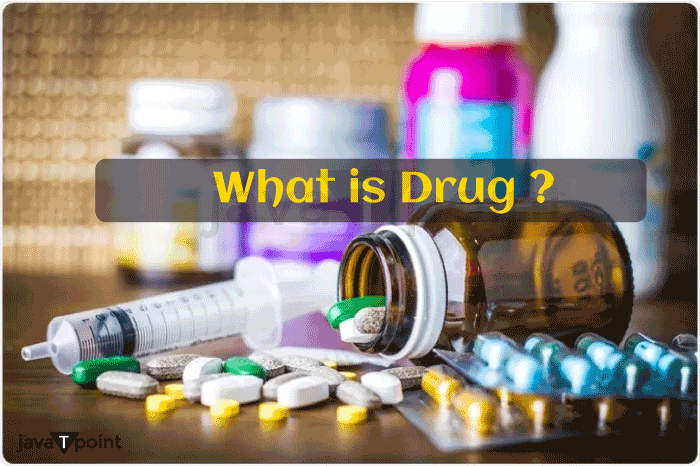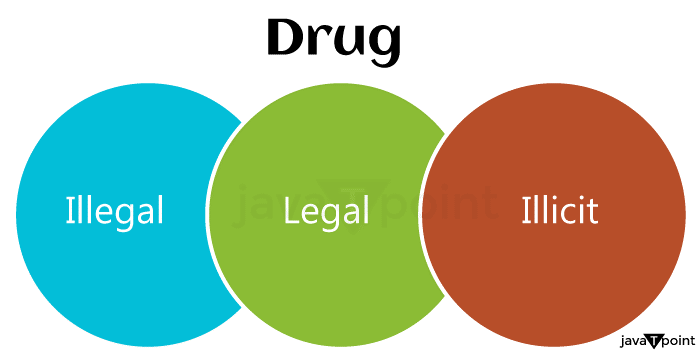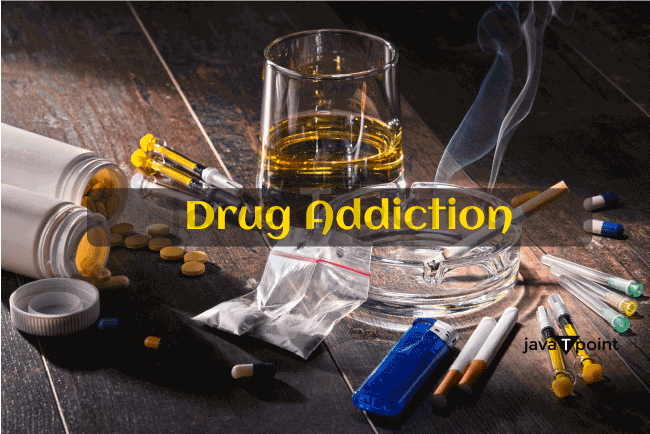Drug definition

When we get ill or sick, we get well by taking medicine that is made of chemicals. Some medicines become a part of our life as they can be consumed by everyone when needed. For example: for fever, we opt for paracetamol, for gastric problems, we have antacids. For pain, we opt for painkillers. These medicines are made with a proper composition of chemicals (set in some portions) aggregated for a particular purpose or to cure the disease or health of a living being. Medicines are also named as drugs that affect the body and mind function, or medicines are made from the drugs (with a properly certified portion of chemicals).

"Drug is a substance consumption of which alters the body function either physically or psychologically" or "drug is a substance that directly affects the central nervous system of the person after direct intake and alters person's mood, behavior and thinking."
Some commonly abused drugs have GHB, alcohol, cocaine & crack, inhalants, bath salts, salvia, Rohypnol, mushrooms, marijuana, depressants, LSD, ketamine, cough and cold medicine, MDMA/Ecstasy, prescription pain relievers, etc. Drugs can be categorized as:

- Legal (we are consuming in our daily diet authorized by the government, such as caffeine, tobacco, alcohol, regular medicines, etc.). In this type of drug, we can control and regulate the active ingredients, like the milligrams of nicotine used in cigarettes and the alcohol content of drinks.
- Illegal (we can't consume them daily as the government bans them and shows negative results. Their addiction ruins lives, and these drugs are like heroin, ecstasy, cannabis, cocaine, etc.). The number of active ingredients in drugs may vary, and they have no quality or price control. Illegal distributor or drug user doesn't know how strong the drug is or what substance is in it. Different amounts of drugs and other unidentified additives are illegally manufactured in different batches of drugs. Using, importing, exporting, and distributing illegal drugs is a horrible crime whose penalties depend on the offender's age (adult or minor), previous offenses, type of drug, the quantity of the drug, and the state or territory in which the offense takes place.
- Illicit drugs: The illicit drugs include prescription medicine (obtained illegally or not used for medicinal purposes, illegal drugs, inappropriate substances (sniffing glue or inhaling paint thinner)
Drugs that affect the human nervous system directly including the state of the person i.e. person mood, thinking, and behavior changes after intake are called psychoactive drugs. The study of humans' psychological processes and behavior after consuming or how drugs affect them is called "psychopharmacology."
These are divided into four categories:
| Depressants drugs |
Consumption of these drugs decreases alertness by slowing down the nervous system. For example, Alcohol, heroin, analgesics |
| Hallucinogens drugs |
Consumption of these drugs leads to a state of hallucination that can alter perception, such as hearing or seeing something that is not present in real. Examples of these drugs are magic mushroom, lysergic acid diethylamide (LSD) |
| Stimulants drugs |
Intake of these drugs increases the activity of the brain (increases the body's state of arousal). Examples of these drugs are nicotine, caffeine, and amphetamines. |
| Other drugs |
Drugs not eligible in the above categories are stated in other drugs because they may have one or more properties. Examples are hallucinogenic, cannabis has depressive and stimulant properties. |
Consuming drugs for a long time shows different symptoms in the body, especially brain has to go through various chemical changes that affect its circuit. It also affects memory, learning, judgment, decision-making, behavior, and stress in the body. Addiction to drugs happens due to biology, development, and environmental reasons.
- Biology: Some biological factors are responsible for increasing the risk of addiction, as people born with addictive genes are at great risk. The risk for drug use and addiction is influenced due to gender, ethnicity, and other mental disorders.
- Environment: Environment factors include family, friends, economic status, and general quality of life. A person's likelihood of drug use and addiction is affected by physical and sexual abuse, peer pressure, stress, early exposure to drugs, and parental guidance.
- Development: Drug addiction risk is affected by genetic and environmental factors that play an important role in in-person life. Drug addiction is a major problem in teens but can become an addiction at any age as drugs affect the brain's decision-making power, self-control, and judicial power. It changes the behavior of a person.

Process followed by drug through the body
Step 1: Administration (drug enters to person's body)
Step 2: Absorption (drugs get into the bloodstream)
Step 3: Distribution (blood carries the drug throughout the tissues)
Step 4: Drug action (drugs start reacting after interacting with cells)
Step 5: Metabolism or elimination (effect of the drugs terminate from the body)
Reasons for having drugs
In normal scenarios, people consume drugs for some of these reasons:
- To feel better: Stress, anxiety, depression, and social pressure are major issues. In most cases, when people suffer they start taking drugs to feel less anxious. Continuous use of drugs can help the patient to recover from this addiction. But sometimes, they become addicted to these drugs.
- To do better: Everyone has to bear peer and work pressure and achieve success (personal or professional) in a lifetime. To reduce this or achieve success, people continuously consume drugs like prescription stimulants or cocaine.
- Curiosity and social pressure: Teenagers start taking due to curiosity and peer pressure. They want to prove themselves cool or classy by consuming drugs. People start becoming part of high society due to social pressure.
- To relieve boredom: In a certain lifestyle, people usually get bored with the same lifestyle and have nothing to do, so they start taking drugs for enjoyment and become an addict.
- To celebrate or commiserate: Nowadays, drugs become a part of the enjoyment as when someone plans a party, they include drugs, alcohol, smoking products, etc., to set the party.
- To gain confidence: Drugs can control your nervous system and give you the next level of confidence to do everything impossible in regular life.
- To relax and forget problems: Drugs can elevate your mood by boosting the happy hormone that makes you relax and forget about all the problems
- To feel happy: Drugs can be responsible for generating an intense feeling of pressure, which is termed euphoria.
Making of drugs
There are different methods or sources from which drugs are formed:
- From plants: Most drugs are fetched from plants as they can be grown easily. For example, tobacco, mushrooms, cannabis, etc.
- By processing plant products: With processing of some plant or their products produce some addictive drugs such as alcohol and heroin. Sugarcane alcohol is made, and other products too.
- By synthetic chemicals: Drugs in terms of medicine and other addictive are made artificially with the proper composition of synthetic chemicals.
There are two main ingredients used in the processing of many drugs, i.e., inactive and active ingredients,
- Active ingredient: That ingredient that affects the body biologically, is present in alcohol, etc., directly showing the physical result.
- Inactive ingredient: These ingredient doesn't directly affect the body or have no biological effect. These ingredients include binding agents, preservatives, flavoring, and capsules.
Methods or ways of consuming drugs
Drugs can be consumed directly or indirectly in daily life, and here are some of the common methods:
- Oral route: It is the convenient, easy, and most accepted way of consuming drugs. In the form of tablets, powders, liquids (alcohol), or gas (smoking), these drugs are consumed. Within a short period of consumption, this process can be reversible. Not all drugs need to get well absorbed or be able to withstand stomach acids. Some drugs show negative effects, which can upset the stomach, and some require large capsules/pills to get over. How much drug is consumed by the body depends on the genetics, drug or drug dosing not precise, stomach contents, and how the drug reacts to the body. In some cases, drugs may be lost to "first-pass metabolism."
- Inhalation: By inhalation, drugs are rapidly absorbed and the fastest route to the brain (impact of drug sees in 5-8 minutes). Drugs can be inhaled as gases, powders, vapors, or particles. It is the easiest way, as drugs can't be tasted, but some drugs can't be inhaled. Controllation of the drug depends on its dose (a high dose is difficult to control).
- Injection: After inhalation, it is the best drug intake method. The injection can be taken SC (subcutaneous) or skin popping. But injecting the drug into the skin can irritate the skin and the speed of the drug spreading in the body depending on the muscle selected (arm faster than butt) and vehicle (micro-encapsulated injections in the butt)
- Intranasal: Drugs can be taken from smelling, i.e., by using nasal spray like Imitrex nasal spray used for migraines
- Through the skin: The drug is absorbed by the body slowly from a cream or patch. These patches consist of tiny microneedles (pain-free) to replace things like insulin and injections.
- Rectally or vaginally as a suppository: The drug is absorbed by the body through the bowel or vaginal lining.
- Low-frequency ultrasound waves: This is the new method of drug absorption in the body.
- Electric current: Using new technology, drugs can be inserted into the body through an electric current.
Symptoms showing drug problems in someone
Here are some of the signs that directly or indirectly show that a person is affected by drugs are as follows:-
- Be sad and feel tired every time
- To be in a bad mood, always
- Facing problems in doing regular work
- Dealing with personal and family relationship
- Like to spend alone time
- Forgetting about important work or appointments
- Reduce or increase in diet or eating habit
- Lying in one place in one condition and doesn't care for themselves, such as not cleaning, brushing, bathing and changing clothes
- Live in their world
- Stay silent or speak continuously without hesitation. That doesn't make sense.
- Losing interest in favorite things
- Being energetic in some cases and can do anything
- Mood swings randomly
- Sleeping at strange hours
- Anxiety and paranoid thinking
- Spend money on buying drug
Prevention from drugs
a) By seeking this help
There are many sources of seeking help regarding the drug, especially in case of addiction to drugs, and these are:
- Calling or seeing a doctor immediately
- Call 1800 022 222
- Visit health direct (external site)
- It prefers Alcohol and Drug support line (external sites). These are 24-hour support lines that provide information, confidential counseling, advice, and referral.
- For life-threatening conditions or emergencies, you can dial 000 for an ambulance or visit an emergency department. In case of death, police are called, or ambulance officers are threatened.
b) Awareness
Awareness about drugs socially plays an important role in their prevention. Awareness campaigns (social awareness programs) try to reach every one mind and give you a clear picture of the impact of drugs and their prevention methods. People dealing with drug addiction can find a way for their treatment and focus on adolescents to protect them. They also focus on adolescents who are highly captured by this chronic addiction. So, awareness programs (community-based), social media awareness programs, print media, and other methods are used for awareness of how to prevent yourself from this chronic drug addiction.
c) Hospitals ("nasha mukti kendra")
A person needs hospital-based or residential treatment in case of severe addiction that can't be treated in the interval. Here are private and governmental drug addiction centers, "Nasha mukti Kendra," available for such patients. These centers financially support patients who can't afford treatment, but the residential treatment programs include housing and treatment services.
d) Medicines
The symptoms and conditions of drug addiction can be controlled with proper medicines. Medicines are prescribed according to the type of drug users that help re-establish normal brain function and reduce drug cravings.
e) Counseling
It is mandatory in preventing and reducing drug addiction cases as counseling may help a person with individual, group, or family therapy. It helps you to understand the reason for being addicted and shows a clear picture of how behavior and life have been changed due to drug consumption. The solution to deal with the problems so that you can't move back to drugs. It gives you the strength to avoid people, places, and situations that can tempt you to use drugs. Channelize your mind and strengthen your feeling to avoid drugs.
|




 For Videos Join Our Youtube Channel: Join Now
For Videos Join Our Youtube Channel: Join Now










